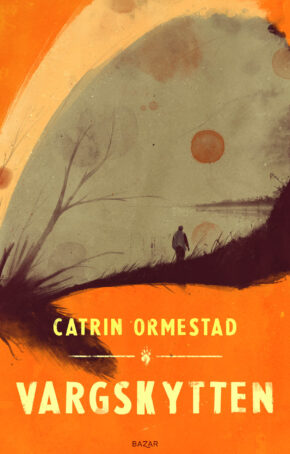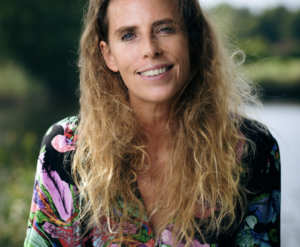
The shot whisked through the air at eleven minutes past three in the afternoon, on the first Sunday of October. The cows in the pasture by the road tossed their heads, and among the summer cottages on the headland a dog began to bark. Everyone in close proximity heard the echo of the shot that killed the wolf.
Life on the island has been peaceful for the past thirty years. Unlike many of his peers and much to the disappointment of his father Samuel, Tillman Ruff resisted the allure of venturing beyond the island of Wiggö. However, one October day, Tillman’s seemingly uneventful existence takes a tumultuous turn when he shoots a wolf, setting a series of events in motion that threaten to disrupt the tranquil life on the serene island. Urgently joined by his friend Ben, Tillman hastily buries the wolf, hoping to sweep the whole incident under the rug. As the two men embark on their covert mission, they are certain that the darkness is keeping their actions safe from prying eyes.
When the police arrive at Tillman’s doorstep the next day, he realizes that he was seen by someone who has now ratted him out. Suspicion swiftly turns to Magdalena – an environmentalist who fled the big city to find solace on the island. As the news of the deceased wolf spreads among the islanders, a flood of memories surge through many of the inhabitants, reminiscent of a fateful fall in the 1980s. It was the last time a wolf arrived on the island, and at the same time, the young Ottoline, a budding butterfly researcher, mysteriously vanished from Wiggö.
Suddenly, nothing is like it was before Tillman shot the wolf. Tillman’s actions create a rift among the islanders; to most of them, he is a hero; but some see him as a disgrace, a criminal. As tensions rise, Magdalena becomes a symbol of the clash between the countryside and the metropolis. At first, Magdalena isn’t affected by it, but when she starts to receive threats, she begins to understand the gravity of the situation. Meanwhile, Tillman’s father, Samuel, finds himself compelled to rectify the chaos wrought by his own son – a chaos he knows all too well from his own youth.
When Magdalena uncovers old documents at the local church, she finds Ottoline’s forgotten diary. As Magdalena meticulously peels back the layers of the past, she unearths the island’s concealed secrets in a tale bearing similarities to her own situation. The words are steeped in worry and sorrow, but to her surprise, it is also a story about lost love, hope and the Apollo butterfly.
In When the Wolf Came, Catrin Ormestad masterfully unveils a gripping tale, set against the vibrant backdrop of the Swedish archipelago. This is not a story about a mere crime; it also delves deep into the intricate complexity of relationships; how they are forged and tested; and how disturbingly close evil is to love.
Reviews
“Catrin Ormestad’s novel When the Wolf Came does not only allow a wolf to swim ashore on Wiggö – the entire contemporary war on culture is unleashed on the island, with Tillman and Magdalena as the leading parties of the conflict. Black and white meet, but they are watercolors, mixed in the ocean’s water, and it is with shades just as grey as the cliffs of the archipelago that Catrin Ormestad paints their lives, with an understanding for both worldviews. […] When the Wolf Came is a novel for this head-fast era of assurance, which encourages listening to one’s fellow humans’ arguments instead of declaring them idiots.”
– Gefle Dagblad (SE)
“Here, a drama unfolds where social control can be fatal, especially for those seeking sustainable change. Catrin Ormestad is a driven writer with a feel for and knowledge about nature and the vulnerable island life.”
– BTJ (SE)
“We get to go on an incredible journey. [Catrin Ormestad] succeeds in writing a book that touches on topical themes such as the climate and biodiversity […] and there are love stories and fragile family ties.”
– Go’kväll (SE)
“Catrin Ormestad writes with nuance about the conflict between city and countryside in the highly topical book When the Wolf Came. […] the novel grows with its characters, they gain life, background and motive to their actions, and the author perfectly illustrates the problems of the outskirts — a little twisted, but still. She also depicts the friendship between Tillman and Ben in a balanced way. Both people and nature are portrayed with empathy and understanding.”
– Upsala Nya Tidning (SE)
